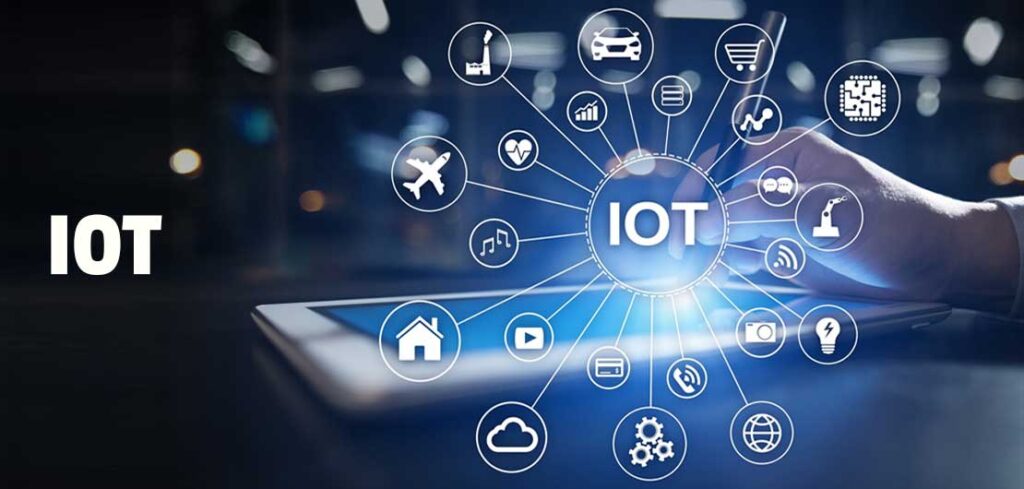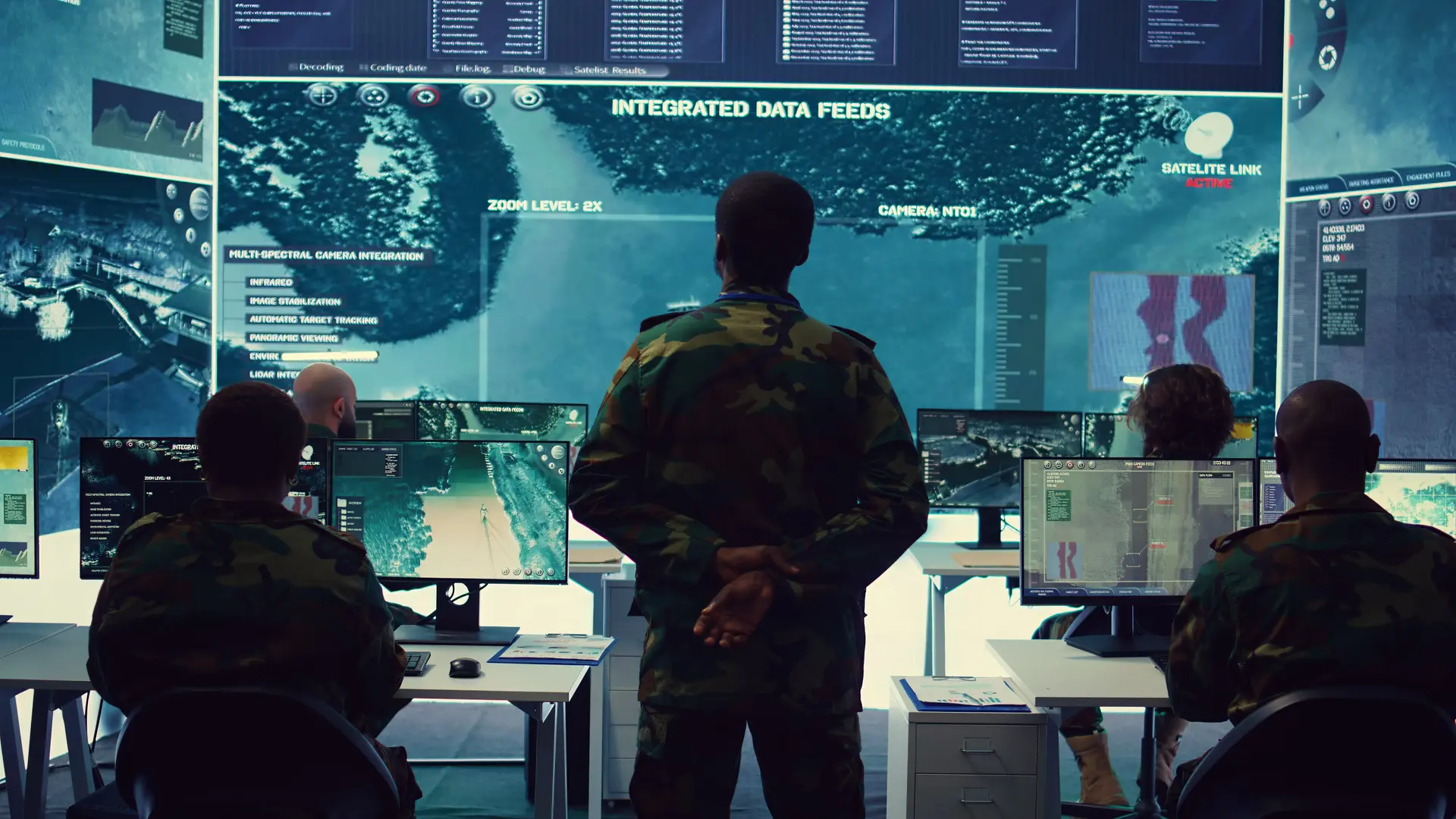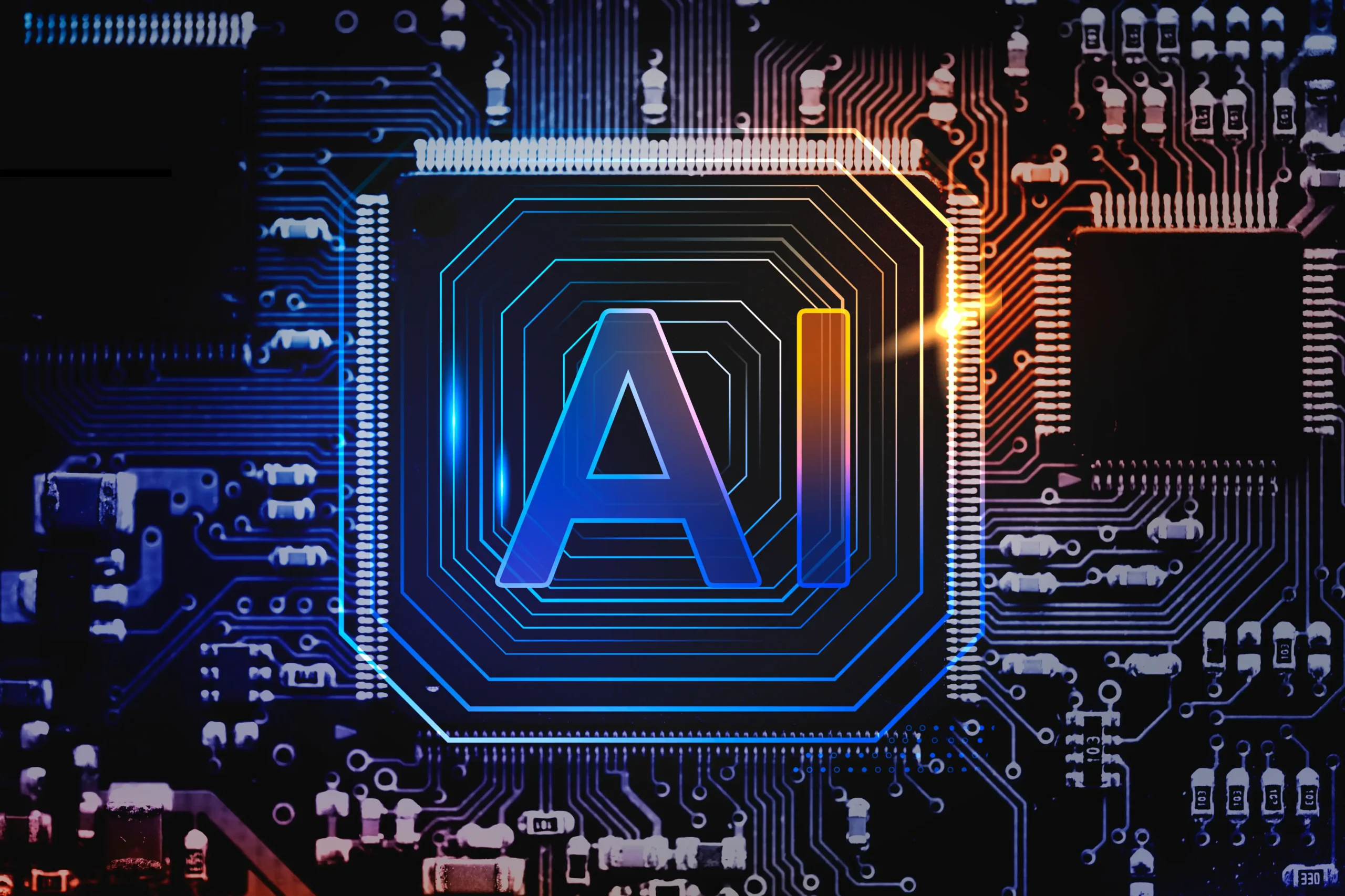Connecting through IoT
We use intelligence, a trait unique to humans, to make judgments. The speed with which we learn and fabricate innovation can gauge intelligence. Given the ascent of the web of things, the possibility of knowledge has acquired importance with IoT. The capacity for objects to see and react to their surroundings is what we mean when we say that- something is intelligent; IoT runs on this framework.

The Internet of Things (IoT) is a trending initiative that aims to connect enormous entities like devices, apps, and information via the Internet to supply a variety of industrial domains with heterogeneous services. The IoT motivates enterprises to implement intelligent and autonomous systems based on linked devices as an emerging engineering paradigm. The ubiquitous IoT applications use various technologies, including identification, networking with sensors and actuators, cloud and edge computing, big data, and stochastic and heuristic techniques.
In many industrial areas, heterogeneous IoT applications have been implemented- for monitoring, control, security, and intelligent systems. The number of Internet-connected devices is expanding swiftly as IoT technologies advance, and to manage this massive IoT device population, identifiers like Identifier (ID) and Uniform Resource Identifier (URI) are designated to distinguish cyber resources from physical resources by connecting the registered information of devices in IoT networks.
From a business perspective, you should get acquainted with sensors and their data collection techniques and be looking for ways to resolve your critical business problems using cutting-edge IoT technology tools.
With an anticipated compound annual growth rate of 47% by 2025, IoT is envisioned to be-the fastest-growing data market globally.
Sensors play a critical role in the device layer of the IoT framework- they contemporize and streamline analytics and networking in an IoT. Thanks to the sensors, IoT-connected data collection points are multiplying fastly across a wide range of industries, from wearables to oil storage, manufacturing to in-home security, and power grid management to automobiles.
Data is the crux of the digital era- the Internet of Things (IoT) generates enormous amounts of data. Rigid data analyses followed by quick decision-making and responsiveness to the environment verify its effectiveness.
A more in-depth investigation will assist you in understanding how sensors make intellectual judgments and how data is altered for its intended purpose.

The primary design considerations for a successful IoT architecture in a heterogeneous scenario include scalability, modularity, interoperability, and openness. The goal of the IoT architecture design must be to satisfy the needs of cross-domain interactions, multi-system integration with the possibility for simple and scalable administration features, big data analytics and storage, with user-friendly applications.
Additionally, the design must allow for scaling up functionality and support for the upsurge of automation and intelligence among the IoT devices in the system.
Intelligent/real-time decision-making is possible with Machine Learning for Sensor Data Analytics.
To interpret sensor data, machine learning is effective. For instance, a CNN (Convolutional Neural Network), which is particularly effective for image processing and computer vision, can be used to examine the availability of a bridge or a road segment. Therefore, for real-time decision assistance, machine learning helps evaluate the literal of a DNF predicate. For real-time decision support in the IoT, sequence models are also helpful. In recent times, long-short term memory (LSTM), an artificial recurrent neural network (RNN) architecture effective for sequence modeling, has been used to identify emotion, forecast cardiovascular disease risk factors, and anticipate healthcare trajectories.
These illustrations prove that data analysis is critical for decision-making.
However, this process is not simple to achieve. The challenge of transporting all sensor data from IoT devices to nearly endless resources is addressed by Edge computing.
Edge analytics intends to combine the benefits of cloud and on-device analytics while addressing their drawbacks by evaluating sensor data at the network edge close to IoT devices and sensors. More computational resources are brought to the network edge- close to data sources through edge computing.
IoT end devices can first preprocess sensor data and carry out simple analytics. Secondly, an edge node that may gather and process data from IoT devices includes an access point, gateway, cellular base station, or software-defined routers and switches. Using edge servers at the network edge can allow for more sophisticated data analytics.

Therefore, event-driven and hierarchical edge analytics for real-time decision support is possible. To identify any events of relevance while removing unnecessary data, an IoT device preprocesses sensor data and runs a quick analysis on it. If there is one, an IoT gateway will further examine the information collected from the devices linked to the gateway. If there is any crucial information, it sends it to one or more appropriate edge servers.
To obtain a more thorough understanding of the real-world status necessary for real-time decision-making, edge servers evaluate real-time sensor data from various IoT devices/gateways. They can also connect to share data for a comprehensive view of actual-world circumstances, such as the general traffic flow in a city or the courses of hurricanes throughout a country. Due to their enormous potential, edge computing and analytics are developing with research and welcomed by corporates. The research on deploying cutting-edge edge computing for an affordable real-time decision has resulted in plenty of opportunities for development across industries and businesses.
Model compression is another aborning area for real-time analyses of sensor data on IoT devices. The main goal of model compression is to condense a machine learning model to reduce the number of resources needed while maintaining a reasonable level of prediction performance. Compact models, tensor decomposition, data quantization, and network sparsification are all effective methods for model compression.
Types of IoT sensors and their applications
Known that, in the IoT, sensors can be used for almost any type of measurement and act as a bridge between desired field observations and applications.
A categorization based on the physical domains will provide you with an idea of its application to your industry.
Electromagnetic and light sensors
RFID sensors for retail and logistics, identification and imaging sensors for security, light sensors for automation in smart buildings, and radioactivity sensors for safety and health applications are a few of these.
Thermal sensors
Environmental monitoring, material temperature monitoring, or room temperature monitoring in smart buildings are some of the thermal sensors used to regulate the industrial process.
Sound and vibration sensors
For instance, seismic sensors for regional safety, sound pressure for health monitoring and industrial process automation, specialized sound monitoring for civil management uses like gunshot noise detection, fitness and health wearables, or vibration sensors for reliability-based equipment maintenance in plants or industrial organizations.
Materials and matter sensors
Specific fluid and gas sensors, such as those to detect a chemical presence or oxygen, carbon dioxide, humidity, or water levels, are needed for many applications in environmental, safety, health, agricultural, and environmental automation.
Space and time sensors
Geographic information system location sensors for logistics management; sensors for personal use; or sensors for vehicle and traffic management that use location, velocity, and acceleration are types of space and time sensors.
After thoroughly comprehending IoT, let’s investigate how mobile and web applications might be created for use in corporate and industrial settings.
IoT in developing web and mobile applications

Smarter Smartphones with IoT
IoT mobile app development can contribute immensely to the industry’s growth. The platform’s extensive data transport flexibility makes it possible- for seamless control of smart devices from a distance.
A mobile app serves as a bridge between an IoT device and a smartphone. The app serves as the main user interface for controlling smart devices. IoT is used in conjunction with mobile apps to supplement and improve its functionality.
For instance, your phone can notify your coffee maker that you are close by so that it can begin brewing coffee before you arrive. Likewise, users can set the room temperature even before arriving at their home.
Why Smartphones?
- Mobile phones work better for remote access from anywhere.
- Smartphones come equipped with a wide variety of sensors. They offer numerous alternatives for connectivity, including Wi-Fi, Bluetooth, and others.
Responsive Web Apps for IoT
The ease of using a smartphone for internet browsing should be comparable to that of a desktop computer. Initially, two distinct websites were created, one for desktop browsers and the other for mobile browsers, as a solution to this issue. Due to the wide variety of mobile devices with various screen sizes and resolutions, this strategy is no longer practical. Making customized web pages that appear excellent across varied screen sizes and resolutions is no longer applicable.
In this circumstance, a web application with a responsive design or one that is meant to be deployed responsively may be appropriate.
The commonly used technologies to create responsive websites are HTML5 and CSS3. In addition, other front-end development toolkits may be utilized, depending on customer needs and the requirement for speedy performance.
How to create an IoT application?
- Hardware for creating an IoT application
- IoT app creation protocols
- A framework to create IoT applications
- Development of IoT applications
Now, where could Performix contribute to the IoT journey of your business?
Creating IoT mobile apps for your industry
With our guidance, you’ll be able to implement a reliable IoT solution.
1.Consider a product idea and the area
What you want your IoT application to do should be your first consideration. To respond, you must first focus on the area in which you wish to provide a solution. You have a ton of choices. You may develop an app for a plethora of sectors, including manufacturing, management operations, security, finance, logistics, etc,
Understand the needs of the niche’s population once you’ve decided on the niche you wish to explore – you can decide which product will best meet their needs by considering the difficulties they experience, which will assist you in creating the app.
2. Pick the appropriate platform

When looking for a platform to develop an IoT application, focus your research on the kinds of technology they support, their price, and their level of quality.
Some of the best IoT platforms are listed below
- Apple Watson
- IoT on Microsoft Azure
- Cloud by Google
- Netflix Web Series
- IoT Cloud Connect by Cisco
- ThingWorx
- Oracle IoT
The platforms described above have varying degrees of use, efficacy, efficiency, and cost. You can decide which one best meets your needs.
3. Decide on the hardware
You have two choices for choosing hardware- either create equipment from scratch specifically for your IoT project or buy hardware that is already available on the market. But make sure the hardware you select fully satisfies the specifications of your program if you choose the latter option. Pay attention to precision and consistency. For instance, if you are building a health app, the smart gadget must include sensors that need to transmit accurate data quickly.
4. At the outset, take scalability into account
The fact that you are now developing a simple app does not guarantee that it will always be that way. You must adapt your app to user needs to remain viable in today’s ever-evolving world. Scaling can be challenging, once the hardware and software are designed. So, contemplate its scalability right off the bat. Ensure that there is space to handle large data volumes and communication across various devices.
5. Aim for a fast app speed
Real-time data transfer necessitates the development of a very speedy app. For instance, IoT is used to create smart cities where citizens may utilize mobile apps to choose the optimal travel routes depending on traffic conditions. The given data would become out-of-date if there were any information lag. The solution, in this case, is to control your car using IoT sensors and a smartphone, which prevents chaos and accurately handles the requests.
6. Put security first
One of the biggest problems the IoT is experiencing is data security. Retail, home security, and healthcare are some of the most popular IoT Apps, which are sensitive to data breaches.
Thus, to satisfy users and protect their personal information, you must build a secure app.
Performix guarantees to accomplish these protocols and build apps that best solve your IoT plans. Our IoT app development specialists create apps that offer a complete user experience. We conduct extensive research to discover the most effective means of communication between open hardware devices and the cloud. Not only that, but we make the platform accessible and user-friendly. Through its secure, scalable, robust product design, and better asset and connectivity management, Performix provides a world-class IoT solution.
We are adept at creating IoT-powered software solutions that may aid organizations of any size in increasing customer retention rates, streamlining operation management, enhancing workplace safety, and boosting employee productivity.
We build top-notch native applications for iOS and Android platforms, hybrid apps, and cross-platform apps.
Our IoT app developers endeavor to develop wearables, smart homes and cars, self-health monitoring, tracking storage conditions, and other mobile IoT-powered applications, making sure the resulting solutions offer safe data transmission, automation, and usability by employing the best front-end and back-end technologies.
Our experts offer IoT web development services, such as platforms for data visualization, admin panels, multidimensional interactive dashboards, IoT analytics tools, and many others. We ensure that our customers have access to digital web solutions that enable them to remotely configure and control their IoT devices, carry out asset monitoring, and provide reports.
On the whole, Performix will provide full-cycle IoT application development services and effortlessly bring your IoT project to life from a vision to a mission with a diverse spectrum of talented individuals, including Business Analysts, Software Architects, back-end developers, QA engineers, DevOps experts, and many others. As part of the process of delivering a successful product, we ensure to follow every grade required for a successful launch- from business analysis to UX research and post-launch assistance- we have you covered!






